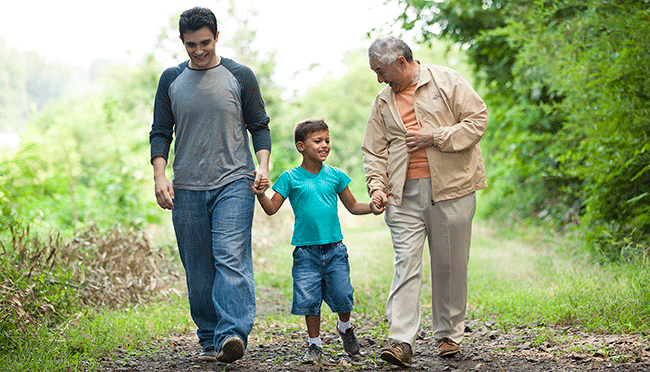 Tracey Harvey
Tracey Harvey
National Program Director Wellness Services
EnerG® by Aegis Therapies
Introduction by Joan Devine, Director of Education, Pioneer Network
Maintaining the “highest practicable level” of wellness. How many times have we read that phrase in the regulations or heard it talked about in trainings about the MDS? Do we know what it really means? It’s not about maintaining what is “practical” or sensible, it’s about what is possible! Achieving the possible for our residents and for ourselves can mean finding new ways to promote health and well being — perhaps it’s time to ramp up our fitness programs.

According to Kansas State University, International Journal of Behavioral Nutrition & Physical Activity; individuals who sat for over 4 hours at a time were significantly more likely to report chronic illnesses. This information does not come as a surprise, and it enhances the importance of implementing a Walking Partners Program to help improve quality of life.
In retirement communities (whether independent living, assisted living or skilled care) it is true that the healthier the residents, the lower the cost of their care and thus the lower the overall operating costs of the communities. Studies have shown that programmed activities in general have higher levels of participation, and walking programs have been demonstrated to be especially effective in helping to maintain older adults’ mobility, balance, muscle tone and overall physical viability where participation levels are consistently high.
As Chief Ambassador for yourself and your residents, you should provide a multitude of opportunities to keep your residents motivated. Integrating a walking program can be simple if you stick to the following guidelines provided by The Institute of Preventive Foot Health along with the ICAA.
- Understanding the importance of preventive foot health is vital. Identifying reputable specialists (podiatrist or orthopedic doctor) in your community to refer residents for an initial foot assessment if working with older adults will ensure they are wearing proper fitting shoes. A good source for more in depth information is the Institute for Preventive Foot Health.
- Encourage the use of a pedometer. They come in all shapes and price ranges. Inexpensive ones are great to start with to simply count steps, and as the user progresses, they may wish to utilize various apps and devices for their phones that fit their activity needs.
- Identify and broadcast three routes that accommodate all fitness levels for 10 weeks. Think of scenic parks, historic areas or indoor mall walking for climates where the heat is unbearable. Frequency and progression is the formula for your clients to see results. Exploring your city will keep your routes interesting and give your clients enjoyment that they would not seek out on their own. Consider incorporating themes into your walks (i.e., garden walk) to attract new clients, or strength and yoga walk with small bands and props.
- Tracking and measuring will keep you and your residents motivated so consider ways to help them log their steps over the 10 weeks and reward the residents at the end for the most steps averaged.
Remember, FUN needs to make a comeback! No amount of discipline and willpower can replace an experience that is fresh, engaging and really fun. Have fun creating and implementing your own Walking Partners Program.
STEPS STATS
- 2.5 feet: average person’s stride length
- 2,100 average steps: about one mile
- 10,000 steps: about 5 miles
- 10,000 steps: expends about 300 to 400 calories (depending on body size and walking speed)
- 1,200 steps: 10 minutes of walking
- 3,100 – 4,000 steps: 30 minutes of moderately intense walking
Note: all these equivalents are averages that will vary among individuals Sources: Research Digest, Walking.about.com
How Many Steps for an active lifestyle?
- Sedentary: <5,000 steps/day
- Low active: 5,000 – 7,499 steps/day
- Somewhat active: 7,500 – 9,999 steps/day
- Active: > or = 10,000 steps/day
- Highly active: > 12,500 steps/day
Source: Tudor-Locke C, Bassett DR Jr., Sports Medicine


